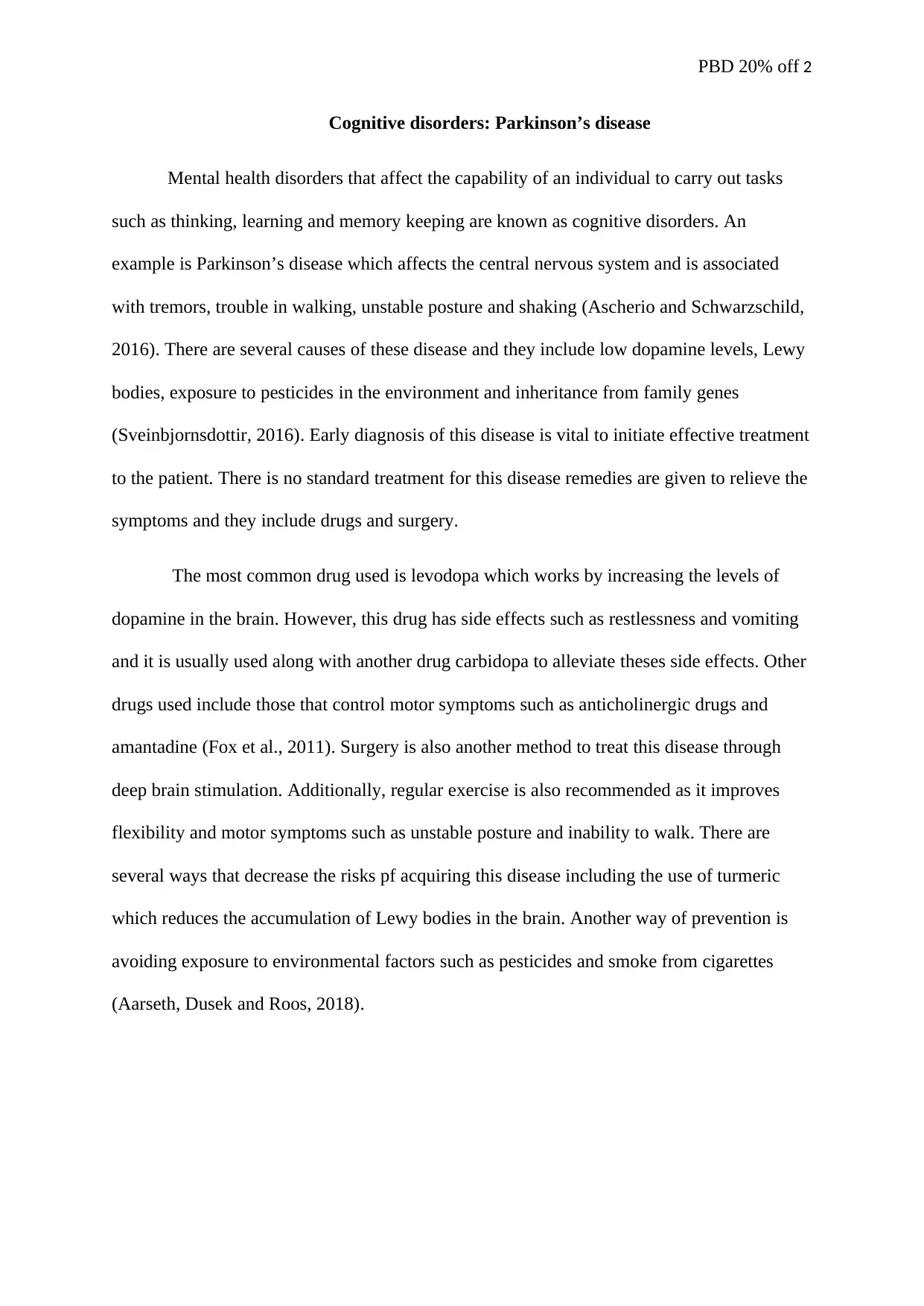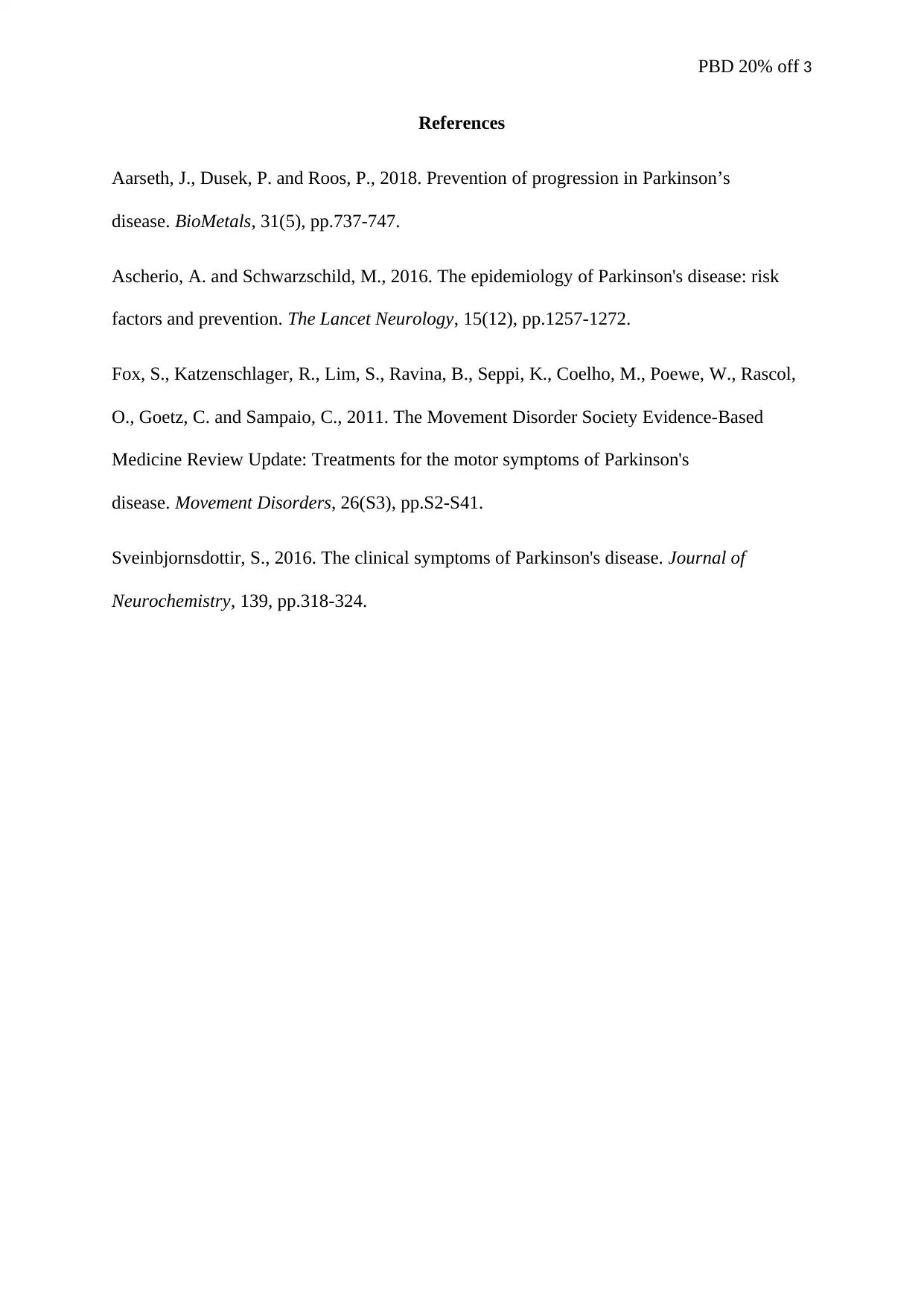Cognitive Disorders: A Report on Parkinson's Disease and Management
VerifiedAdded on 2022/09/14
|3
|495
|20
Report
AI Summary
This report provides a comprehensive overview of Parkinson's disease, a cognitive disorder affecting the central nervous system, and is characterized by tremors, walking difficulties, and postural instability. The report explores the causes of Parkinson's disease, including low dopamine levels, Lewy bodies, and genetic factors. It highlights the importance of early diagnosis and discusses various treatment options, such as levodopa, anticholinergic drugs, deep brain stimulation, and the benefits of regular exercise. Furthermore, the report addresses preventive measures, including the use of turmeric and avoiding environmental factors like pesticides and cigarette smoke. The report references several research articles, providing a well-rounded understanding of the disease and its management.
1 out of 3





![[object Object]](/_next/static/media/star-bottom.7253800d.svg)